Tiny but Mighty: The Choker
From Protection to Protest, Five Ways the Choker has Influenced Society
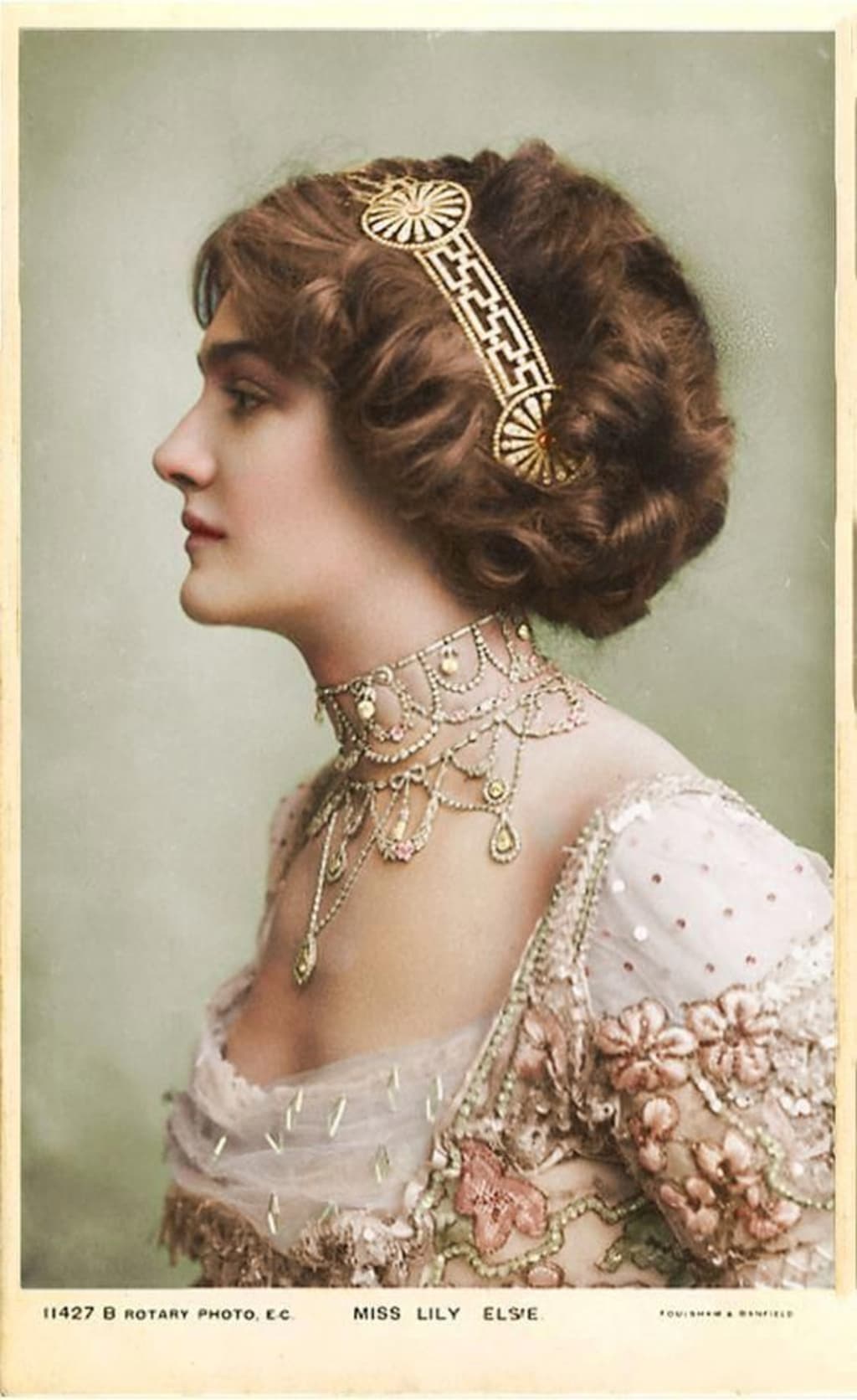
I grew up in the 90’s and early 2000’s. I scrunched my hair and straightened my bangs. I accessorized with bouncy butterfly clips, white eyeshadow, and flavored lip-gloss. I wore scrunchies on my wrist. I wrapped flannel shirts around my waist and danced in frayed wide leg jeans to Brittney. I begged my mom to let me bedazzle my bellybutton with stick-on rhinestones like Christina. (Looking back, thank God she said no.) It was grungy, it was tacky, and it was wonderful. As the fads of the 90’s and early 2000’s come trickling back into present day trends, the nostalgia washes over me and wraps me into the warm hug of childhood memories. As I happily embrace the comeback of bellbottoms and flannel, there has been one thing that just gets me giddy: the choker. Easily my favorite item from the time, wearing a choker always made me feel like the coolest kid in the room. They made me feel pretty, and there was something about them that felt so mature, like wearing one made me older and edgier than I was. As an adult, wearing a choker evokes the same kind of confidence; I feel sexy, spunky, and there’s something about them that now feels so sophisticated. It’s such a tiny accessory, and yet it stirs up so much emotion and so quickly bumps my self-esteem up a few notches. Looking back through the choker’s history, it turns out that I am not the only one that the piece has this type of effect on. It’s been a look for thousands of years and has held power in many ways over the centuries.
So, let’s cut into it. Below are five of the ways the choker necklace has influenced society and the different ways the accessory has been used.
1. Ancient Civilizations Used Chokers as Protection
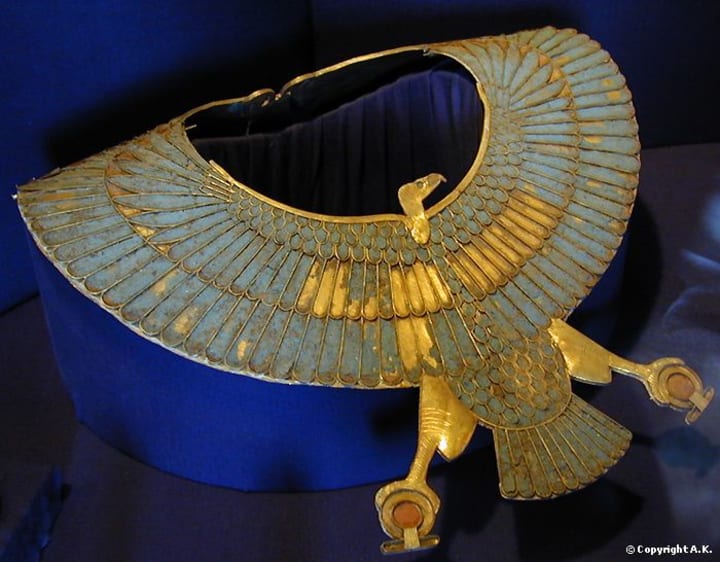
The style of necklace can be traced all the way back to ancient Mesopotamia and Egypt where women wore them not only to decorate their bodies but to protect them, both physically and spiritually. Chokers were worn, as well as belts and wrist cuffs to protect some of the most vulnerable parts of the body from violent attacks. They were often adorned with jewels and metal shaped into symbols to honor the Gods and attract spiritual protection as well. For example, a pregnant woman might wear symbols representing the Goddess Tawert to attract safety and protection during her pregnancy and childbirth. They would layer multiple strands made from a variety of metals, stones, beads, and carvings; each element significant in their own way in providing spiritual protection while the placement of the jewelry provided physical protection. Native American and African cultures had the same practice of wearing chokers and bracelets to protect the body. Usually made from hard metals or bones, the necklaces acted like an armor, designed to protect the throat in battle.
2. Chokers Were a Symbol of Protest During the French Revolution

The French Revolution was a violent time within French history, when famine, rising goods prices, and political unrest led to the overthrow of the French Monarchy. In order to combat the mutinous citizens, the government made a spectacle of beheading the rebels with an axe or guillotine, a practice that was turned upon the aristocracy themselves towards the revolution’s end. As a sign of protest and a symbol of homage to those lost to the guillotine’s blade, women began to tie red ribbons around their necks in a choker style. The red chokers were worn to resemble the cut of beheading, and some believe them to be a throwback to the irony of Anne Boleyn’s choker necklace from 200 years earlier.
While the red choker was a political statement in France, it was a joke in England at the same time. At the time of the French Revolution, the English and the French were famously on the outs. Only a decade earlier, the French had helped the American Colonies separate from the British, and the two countries had continued to battle on a small scale – clashes that would eventually lead to the Naploeonic Wars. Having no sympathy for the plight of the common Frenchman during their civil war, English women adopted the red ribbon chokers to mock the country and the constant beheadings of the French people.
3. There Was a Time When Chokers Were Associated with Sex Workers
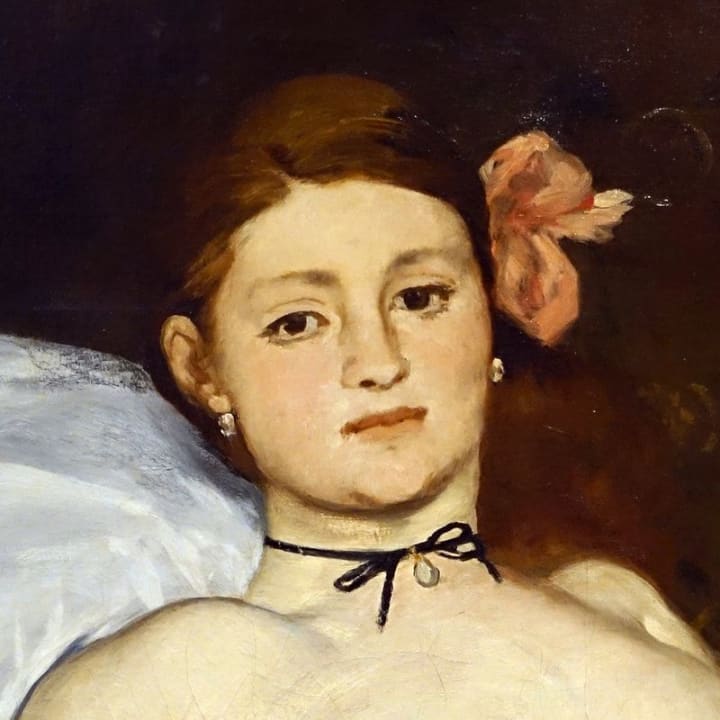
Though this has not been 100% validated as fact, in some parts of Europe, wearing choker necklace was limited to sex workers. This idea comes from the famous Manet painting, Olympia, which shows a young, beautiful sex worker wearing a black ribbon tied around her neck. The fame of the painting associated the accessory with the profession and became a symbol of ladies of the night. However, ten years later Edgar Degas used the accessory to decorate the ballerinas he painted, which gives weight to the argument that rather than representing scandalous occupations, the flattering piece of jewelry simply adds beauty to the wearer. A choker accentuates the neck, making it seem longer and slenderer, which was a popular beauty standard at the time.
4. Chokers Were Used to Cover Imperfections
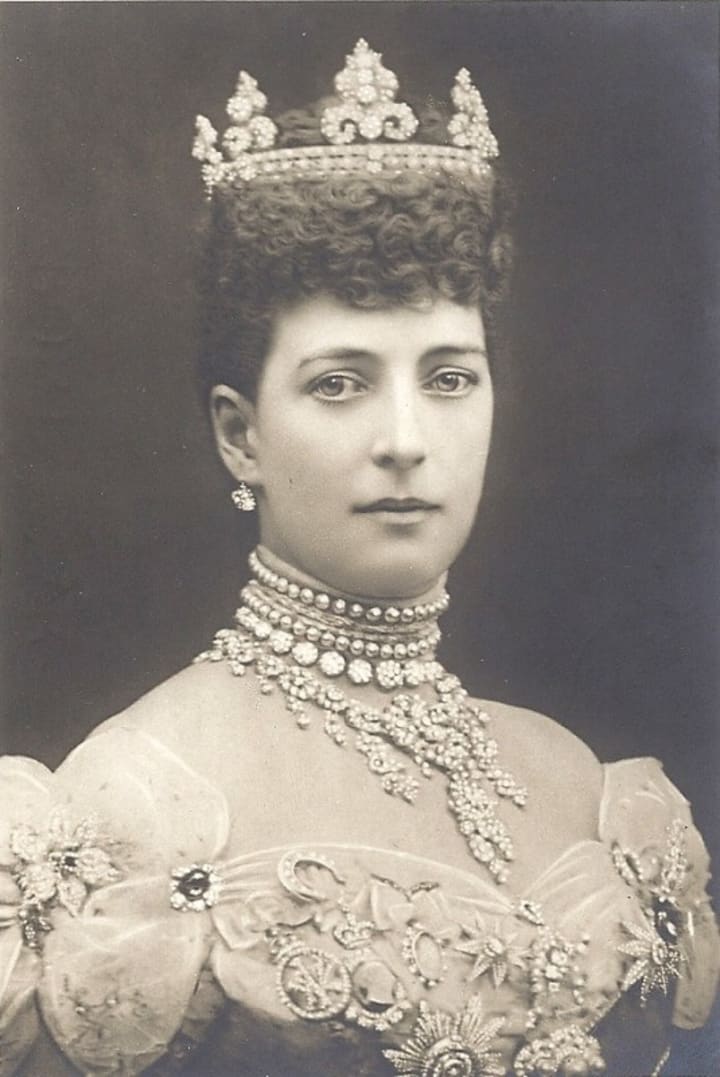
While some areas of Europe associated the choker with sex work and ballerinas, it was having a serious moment in England’s elite society. Like with many trends during Victorian times, Queen Victoria’s regular use of choker necklaces made them an extremely popular item among the elite women of England. The simple design of the accessory and popularity of the look even trickled down to the common classes, women often tying ribbons or scraps of fabric around their necks to emulate the style. Following Victoria, Queen Alexandria perpetuated the fashion by wearing stacks of chokers, covering nearly her entire neck in jewelry. While it was a look for sure, this practice served the queen another purpose: Alexandria had a scar from a thyroid surgery, and she wore collars and stacks of chokers to cover the imperfection. She was not the only one to do this. The idea of covering a blemish with a decorative necklace was already common practice for Austrian women. Those who lived in South Germany and Austria often suffered from a disease called Goiter, due to the environment provided by the high Alps. Goiter causes lumps to grow along the throat and neck, so women wore “goiter chains” or choker style necklaces in an effort to hide their lumpy throats.
5. The Tiffany & Co Slave Collar Scandal
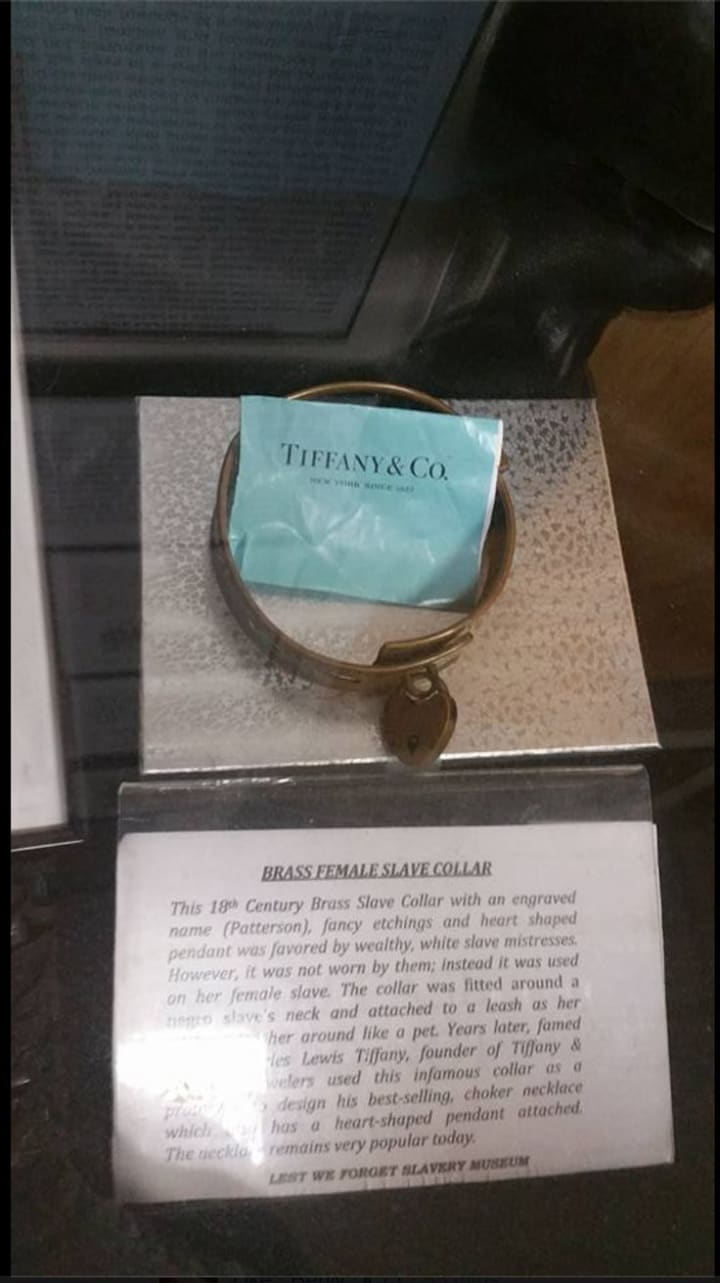
One of the most disturbing versions of a choker necklace was the slave collar. Used to either identify a risky runaway or to “decorate” a housemistress’ personal slave girl, the slave collar was an abhorrent tool of oppression. Usually made from precious metals and engraved with the owner’s name and address, the collar was an element that simultaneously degraded the wearer and boosted the status of the owner. Tiffany and Co found themselves in hot water when a photo of one of these collars went viral in 2016. A patron of the Lest We Forget Black Holocaust Museum of Philadelphia snuck a photo of a slave collar that was displayed with a Tiffany and Co logo. The collar donned a heart shaped charm and was described as the inspiration behind Tiffany’s famous heart pendant choker. The photo was shared over 30,000 times which prompted Tiffany & Co to issue a statement saying, “We are deeply troubled by the image circulating of a 'slave collar' and can definitively assure you that this piece was not made by Tiffany, nor have we ever made any jewelry in our 179-year history for this deplorable purpose.” Shortly after this statement, any references to Tiffany & Co were removed from the museum’s display. Despite this, the damage had been done and Tiffany’s was facing quite a bit of backlash, so much so that it caught the attention of Snopes, the fact checking website that verifies or debunks viral internet claims. The Snopes author, Kim LaCapria dug deep into the company’s archives and while Charles L. Tiffany, the founder of Tiffany and Company, had ties to the slave driven cotton industry, there is no evidence of the company ever producing slave collars or anything seemingly inspired by them. Kim writes that while “determining the exact inspiration for any particular item of Tiffany & Co. jewelry is difficult, as it involves assigning motives and experiences to people who are not here to explain those aspects for themselves” the company is, actually, linked to the abolition of slavery by having provided military supplies to the North during the Civil War. Additionally, the heart design referred to in the museum description was not created until the late 1960’s, and anything made in the choker style were actually designed in the late 20th century by Elsa Peretti and Paloma Picasso. The famous and popular Tiffany heart choker had virtually nothing to do with Charles Tiffany since he was long dead by the time they were first designed.
Despite the idea that the jewelry powerhouse had any connection to the design of the slave collar was debunked, the scandal sparked an important conversation. An item that in one context provides style, sex appeal and a fun fashion statement, can live in an entirely different context for others as a symbol of oppression and degradation.
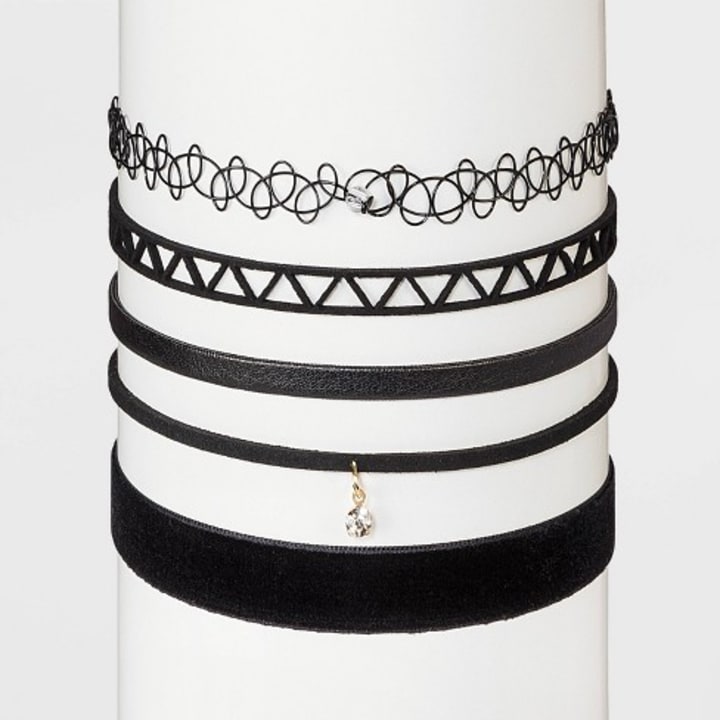
It’s a tiny accessory, subtle and often a little edgy in modern context, but the choker necklace has been an iconic statement piece for thousands of years. Its popularity has waxed and waned, as has its place in determining the social status of the wearer. After Queen Victoria, the Queen of Trends herself, normalized the style in the late 1800’s, the look trickled down into the masses, every woman tying ribbons and pinning brooches at their throats. The stacked styles of ancient Egypt and Queen Alexandria were copied into the 1920’s where flapper girls wrapped long strings of pearls around their necks and hung pendants from the strands. 1950’s housewives dressed up their sweetheart necklines with everything from a dainty string to a wide, collar like sash tied and decorated with pins and jewels. 1970’s rock stars bent gender rules and rocked tightly knotted scarves and stringy choker style necklaces as they gyrated on stage. The choker paired perfectly with the flannel and crop tops of the 90’s grunge era. The accessory has made a comeback in recent years and is probably here to stay for a while. The best thing about a choker is that there is something for everyone. From a dainty ribbon or chain to lace to edgy studded collars, the choker necklace grabs attention and flatters every shape, size, and style.
Cheers!
Sources
Garber, Megan. “The Long (and Short) History of the Choker.” The Atlantic, Atlantic Media Company, 11 Oct. 2016, https://www.theatlantic.com/entertainment/archive/2016/10/neck-and-neck-the-long-and-short-history-of-the-choker/503315/.
[email protected], Michelle, et al. “The History behind ... the Choker.” Nationaljeweler.com, https://www.nationaljeweler.com/articles/9497-the-history-behind-the-choker.
Komar, Marlen. “The Slightly Creepy History of Chokers Will Probably Surprise You.” Bustle, Bustle, 1 Mar. 2017, https://www.bustle.com/p/the-slightly-creepy-history-of-chokers-will-probably-surprise-you-34124.
LaCapria, Kim. “Did Tiffany Chokers Originate as Slave Collars?” Snopes.com, 27 Sept. 2016, https://www.snopes.com/fact-check/tiffany-chokers-slave-collars/.
About the Creator
Chelsea Adler
Obsessed with fashion. Obsessed with dark history. Even more obsessed with escapism through a good story whether it's reading or writing one. Spice is a plus. This page is a combination of all of that. Enjoy 🖤





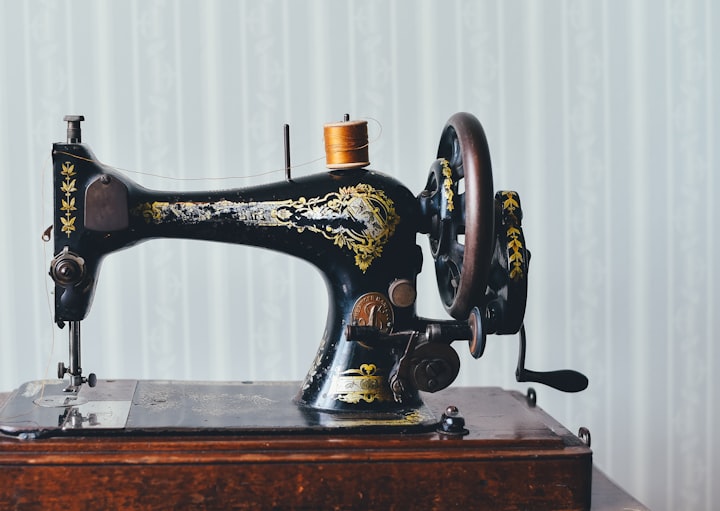

Comments
There are no comments for this story
Be the first to respond and start the conversation.